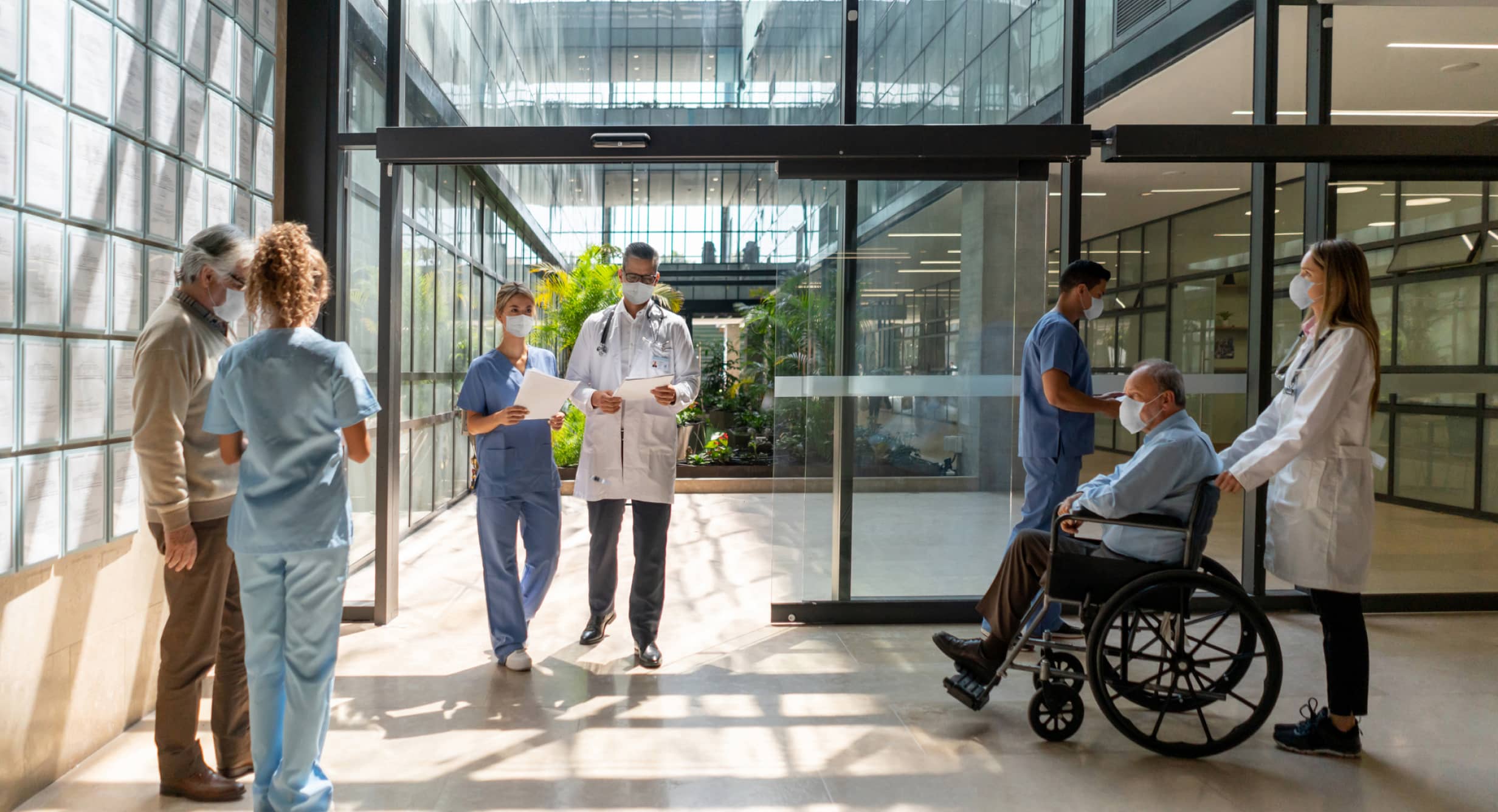The COVID-19 pandemic has changed healthcare design forever. Large and small hospital systems have had to implement resilient strategies to support and maintain operations during a pandemic. With the increasing likelihood of new infectious diseases on the horizon due to climate migration, creating facilities that can maintain operations during a pandemic is essential.
In response to the stress that the COVID-19 pandemic has put on our healthcare systems, Dallas-based architecture firm HKS has collaborated with engineering firm Arup in releasing a report titled “The Pandemic-Resilient Hospital” this past January. The report is a collaboration between the two global firms in sharing actionable strategies for the healthcare system.
“We’ve learned many lessons throughout the COVID-19 pandemic, particularly the critical need for hospitals to stay operational and open for business whatever may come. These facilities are essential to serving all community health needs, above and beyond responding to the virus,” said Jason Schroer, principal and director of health for HKS, via release. “The recent shutdowns of health care come at a great cost to overall patient outcomes. The design thinking we’ve explored with Arup addresses how we can create flexible, resilient facilities for care and be responsive to widespread infectious disease events while also maintaining normal operations.”
HKS and Arup have devised seven principles for a pandemic-resilient hospital: versatility, surge readiness, supports well-being, clean air and surfaces, can isolate, contain and separate, enable flow and enable the digital and physical connection. The design features need to be versatile and work for everyday standard patient care while meeting pandemic needs to increase patient severity in the existing facility.
Design Elements
Pandemic care is exceptionally stressful for staff, patients, and families. Hospitals can designate and design areas to serve as spaces for respite, recovery, and well-being. They can be designed for more rigid safety and cleanliness standards as well. By providing clean air and surfaces to reduce the transmission of infectious particles, the hospital supports the maintenance of clean air and surfaces. Hospitals need to isolate and rapidly contain individual sections while continuing business and life in others. This keeps threshold spaces, such as entrances, waiting rooms, and lobbies, safer.
Healthcare facilities need to have surge spaces for triage and care with medical gas, telecommunication, and other support systems such as temporary walls to provide for emergencies. Technology to assist contract tracing within the hospital to contain infection is also necessary. Providing screens for patients to communicate with loved ones during isolation is another element that supports patient well-being.
“Given the hard truth that we will see more pandemics in our future, it is more important than ever to create facilities that are flexible and resilient for what might come,” said Bill Scrantom, Americas Healthcare Leader at Arup via release. “Our collaboration with HKS has resulted in a report that offers core considerations, rather than prescriptive solutions, that address the unique needs and design of each hospital when planning for future pandemics.”
Learn more and read the full report here.




